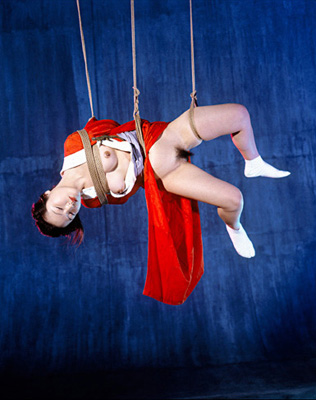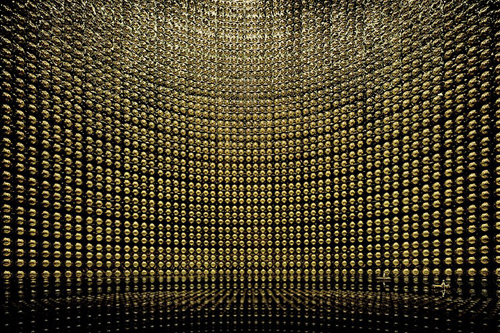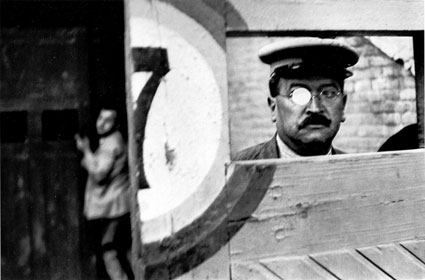 Daniel Templon is currently exhibiting a recent series of Araki's bondage photographs, work which has been doing the rounds for some time now with shows in Tokyo, Berlin, Oslo and London. The Paris show includes 15 large-format (150 x 120cm) colour digital prints of images taken in the past couple of years.
Daniel Templon is currently exhibiting a recent series of Araki's bondage photographs, work which has been doing the rounds for some time now with shows in Tokyo, Berlin, Oslo and London. The Paris show includes 15 large-format (150 x 120cm) colour digital prints of images taken in the past couple of years.
For anyone who was at last year's edition of Paris Photo (Japan was the 'guest' country), this work will be familiar. Araki is one of the very few Japanese photographers to have succeeded in building himself a global reputation, and you will always come across a few of his prints at any major photography fair. However at Paris Photo it really felt like overkill to me: his large-format bondage images popped up on so many booths that I kept getting confused about where I was.
This Paris exhibition, Bondages, is trademark Araki: kimonos, plastic godzillas, bondage rope, flowers, the odd dildo, and as much female flesh as possible. The images are undeniably striking and, although this is far from new ground for Araki, the move to large-format colour may even succeed in accentuating their provocative impact. During my visit to the show a group of Parisian thirty-somethings fresh from the squash court giggled their way around the room, faces pressed up against these life-size sexual fantasies, while an elder couple of apparently regular collectors (she clearly unimpressed, he secretly enjoying himself) asked one of the staff for an explanation as to why on earth these images were even worth looking at.
However, I can't help wondering whether Araki is actually playing it a bit safe here. He is undoubtedly a diverse photographer, from his early Satchin and Mabo series to his photographs of Tokyo and, my personal favourite, the work that he did on his wife (Sentimental Journey and Winter Journey). But recently he has been in danger of becoming something of a one-trick pony. I don't think it is necessarily a bad thing to continue returning to an idea, concept or even an aesthetic over a long period of time. The thing that bothers me is that it feels like Araki keeps coming back to bondage because that is what the market is asking him for. The intimacy of his early bondage photographs has gone and it is being replaced with something more akin to performance. The problem I have with many of these images is that they seem to be playing up to a Western fantasy of an exotic Japanese sexual sub-culture and, given how ubiquitous Araki has become, contributing to the myth that this is what all Japanese photography looks like. These images leave me feeling that, instead of being introduced to a strange private world, I am being duped.
Rating: Worth a look
Further reading: Vice magazine interview with Araki which is refreshingly unlike every other photographer interview you have ever read. (via mcvmcv)
 The excellent
The excellent 
